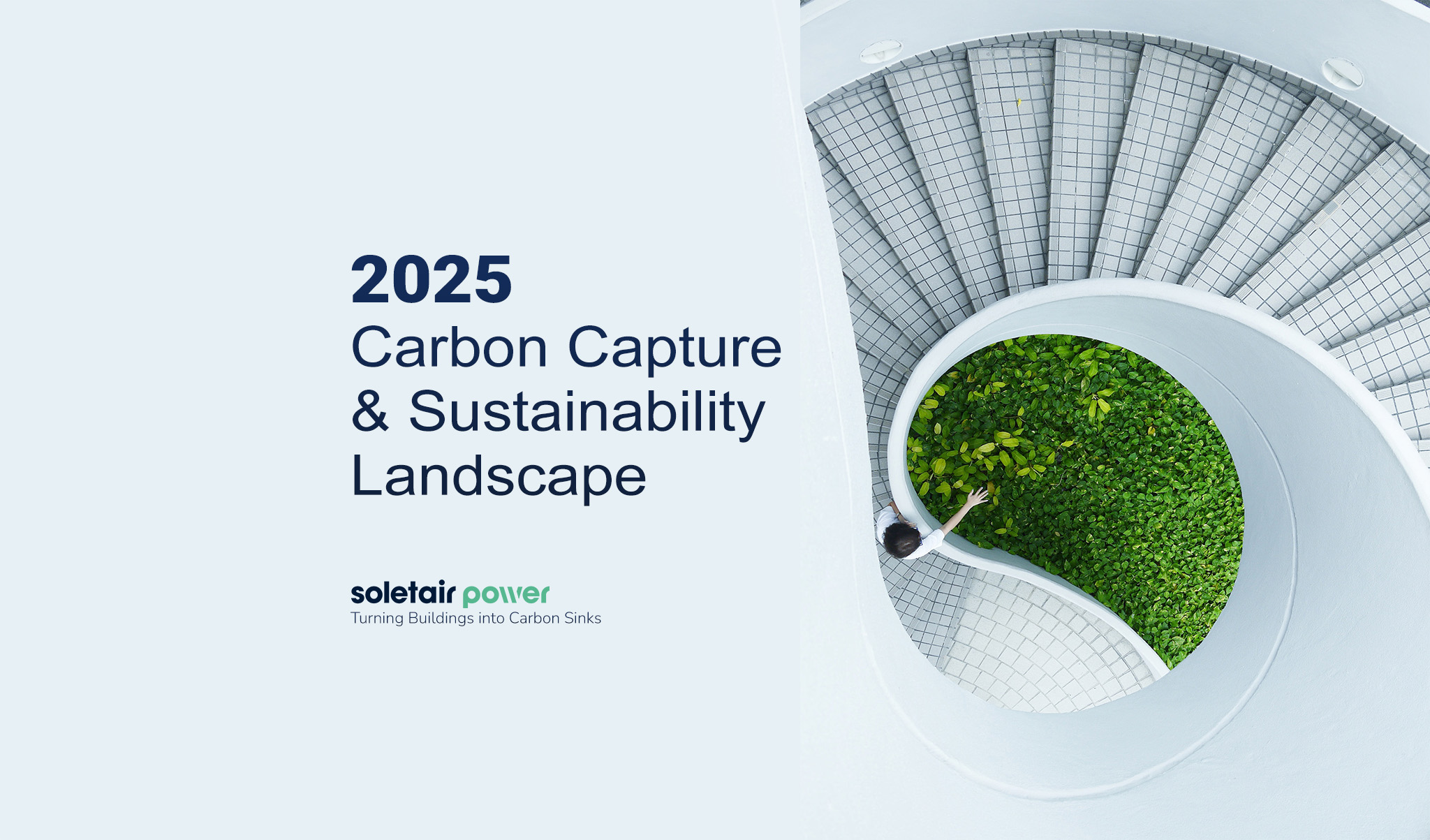In January 2023, a Danish building regulation mandated that all new buildings above 1000 square meters must meet an emission threshold set at 12 kg CO2e per square meter per year. This threshold is planned to become stricter over time to decrease the country’s CO2 emissions from the construction sector. Also, all new buildings need to undergo an LCA (Life Cycle Assessment) to assess their environmental impact over a 50-year lifespan. This process considers factors like energy consumption, material selection, construction methods, and operational practices, all of which influence a building’s carbon footprint. Sweden and Norway have already introduced climate declarations, and Finland is in the process of finalizing their legislation. Iceland is in the process, and now, as the first Nordic country, Denmark, as mentioned, limits values in their building regulation.
These regulations establish a baseline for reducing a building’s environmental impact and signal the need for getting certified by established building certifications with a structured framework. By incorporating best practices and exceeding the baseline set by regulations, building certifications can unlock even greater sustainability benefits.
Why Building Certifications Matter
The global construction industry is a major contributor to greenhouse gas emissions. It’s estimated to account for nearly 40% of global CO2 emissions. Building certifications offer a framework for assessing and optimizing a building’s environmental performance throughout its entire lifecycle, with a particular focus on reducing carbon emissions. Here’s how they contribute to a more sustainable building industry:
- Structured Approach: Certifications provide a clear roadmap for achieving sustainability goals, with established best practices. This allows developers to make informed decisions throughout the construction process.
- Third-Party Verification: The independent verification process ensures the building meets the stated sustainability criteria. This builds trust and transparency for tenants, buyers, and investors.
- Enhanced Marketability: Certified buildings are often more attractive to tenants and buyers who prioritize environmentally friendly spaces. This can lead to higher rental rates and property values.
- Innovation: Certifications encourage the development and implementation of innovative solutions for reducing a building’s carbon footprint.
Globally Recognized Green Building Certifications
Several building certification programs have gained global recognition for their focus on reducing a building’s environmental impact:
LEED (Leadership in Energy and Environmental Design)
This program by the U.S. Green Building Council (USGBC) promotes sustainable buildings through a points-based system that considers energy savings, water efficiency, material selection, and indoor environmental quality. A focus on energy efficiency translates directly to lower carbon emissions.
Learn more about LEED: Leadership in Energy in Environmental Design
Read how you can earn more LEED points with Soletair Power: https://www.soletairpower.fi/earn-leed-and-well-points/
LEED Zero verifies net zero goals. An extension of LEED, this program focuses on achieving net-zero impact for buildings in areas like carbon emissions, energy use, water use, and waste.
Read more about Leed Zero: https://www.usgbc.org/programs/leed-zero
LEED Zero Carbon Update (draft) recognizes net zero carbon emissions from energy consumption through carbon emissions avoided or offset with additional requirements around onsite combustion, refrigerants, embodied carbon and transportation over a period of 12 months.
Read the draft: https://www.usgbc.org/resources/leed-zero-carbon-update-draft
GRESB (Global Real Estate Sustainability Benchmark)
Established in 2009, GRESB is an investor-driven 5-star rating system that assesses and benchmarks the ESG performance of real estate portfolios. Used by property buyers and tenants alike, the certification conveys an efficient and high-performance building with lower running costs. GRESB assessments are aligned with international reporting frameworks, such as GRI, PRI, SASB, DJSI, TCFD recommendations, the Paris Climate Agreement, UN SDGs, region and country specific disclosure guidelines and regulations.
Learn more about GRESB: https://www.gresb.com/nl-en
Read about the GRESB assessment: https://documents.gresb.com/generated_files/real_estate/2024/real_estate/scoring_document/complete.html
BREEAM (Building Research Establishment Environmental Assessment Method)
Launched in 1990, this international certification program assesses the environmental performance of buildings throughout their life cycle. It considers factors like energy use, water conservation, waste management, materials, and health and well-being. BREEAM offers five levels of certification, with higher levels requiring stricter performance on carbon reduction. Today there are almost 550,000 BREEAM certified developments and almost 2,250,700 buildings have been registered for assessment. BREEAM dominates the UK market.
Read more about achieving net zero with BREEAM: https://breeam.com/about/net-zero-carbon
Learn more about BREEAM certification: https://tools.breeam.com/projects/
CRREM (Carbon Risk Real Estate Monitor)
This EU-funded project provides a tool for real estate investors and managers to assess the carbon emissions of their portfolios and identify strategies for decarbonization in alignment with the Paris Agreement goals. CRREM aims to accelerate the decarbonization of the EU commercial real estate sector under new climatic conditions. CRREM provides assessment tools for identifying stranding risks, GHG-reduction pathways according to the SBTi (Science-Based Targets Initiative), and reporting templates. The original CRREM project was funded by the European Commission’s Horizon 2020 Programme. APG, PGGM, NBIM, GPIF, and Ivanhoé Cambridge have funded the expansion of the CRREM pathways to include major real estate markets outside the EU, as well as the residential real estate sector. The global pathways were derived with oversight from the CRREM Scientific Advisory Committee.
Download the CRREM risk assessment tool: https://www.crrem.eu/tool/
DGNB (German Sustainable Building Council) (Germany)
This German green building certification system assesses the sustainability of buildings based on environmental, economic, and sociocultural criteria. DGNB places a high emphasis on energy efficiency and CO2 reduction strategies.
Read more here: https://www.dgnb.de/en/certification/important-facts-about-dgnb-certification
WELL Building Standard
This certification by the International WELL Building Institute focuses on creating buildings that prioritize human health and well-being through features like improved air and water quality, natural light, and access to fitness and wellness amenities. IWBI WELL Being Standard is a user-focused offshoot of the WELL Building Standard that allows individuals to certify their homes, offices, and other spaces based on their impact on health and well-being.
Read more about WELL: https://www.wellcertified.com/
ENERGY STAR
This is a U.S. Environmental Protection Agency (EPA) program that identifies and promotes energy-efficient buildings and products. Earning the ENERGY STAR label indicates that a building performs better than at least 25% of similar buildings in terms of energy use. ENERGY STAR® Portfolio Manager® is an interactive resource management tool that enables you to benchmark the energy use of any type of building, all in a secure online environment.
Benchmark your building here: https://www.energystar.gov/buildings/benchmark
EDGE (Excellence in Design for Greater Efficiencies)
This program by the IFC, a member of the World Bank Group, focuses on promoting energy and water efficiency in new and existing buildings, particularly in emerging markets. EDGE includes a web-based application to help identify the most cost-effective ways to reduce the resource intensity of a building.
Start the assessment and certification process at the EDGE App: https://app.edgebuildings.com/project/allBuildings
Take the Zero Carbon Pledge: https://edgebuildings.com/zero-carbon-pledge/
CAGBC’s Zero Carbon Building™ (ZCB) standard
Canada Green Building Council’s Zero Carbon Building™ (ZCB) standards are a framework that makes carbon the new measure of building innovation. Among the world’s first zero-carbon building standards, they recognize the importance of building emissions in reaching national climate commitments. Zero Carbon Building – Performance Standard™ is used to demonstrate that a building has achieved zero-carbon operations. It requires verification annually. Zero Carbon Building – Design Standard™ guides the design of new buildings or retrofits of existing ones. It offers a pathway to ensure buildings can achieve zero-carbon once in operation.
Read more here: https://www.cagbc.org/our-work/certification/zero-carbon-building-standard/
Zero Carbon certified buildings by LBC (Living Building Challenge)
This certification program by the International Living Future Institute sets a high bar for sustainable buildings, requiring them to be net-positive for energy and water, use only healthy materials, and be built on a restored site. While not solely focused on carbon, achieving net-zero energy use significantly reduces a building’s carbon footprint. Zero Carbon certified buildings are verified by a third-party after a 12-month performance period to be energy efficient, combustion free (or actively phasing out combustion), and powered by renewals. Read more: https://living-future.org/zero-carbon/
Green Star (Australia)
This is a comprehensive green building rating system administered by the Green Building Council of Australia. It considers factors like energy efficiency, water efficiency, materials, indoor environment quality, and innovation.
Read more about Greenstar.
CASBEE (Comprehensive Assessment System for Built Environment Efficiency) (Japan)
CASBEE specifically caters to the Japanese building industry, offering a framework for assessing a building’s environmental performance throughout its lifecycle. CASBEE Certifications are based on a five-scale system (“Rank S (excellent),” “Rank A (very good),” “Rank B+ (good),” “Rank B- (slightly inferior)” and “Rank C (inferior)”) for buildings that have been completed for more than one year.
Haute Qualité Environnementale (HQE) (France)
This French environmental quality certification system assesses buildings on environmental performance, occupant comfort, and economic efficiency. Two independent and impartial certifying bodies deliver HQE certification in France and internationally: Certivea and CERQUAL Qualitel. A new certification version, HQE Residential, has been launched on February 1st, 2023. This new version is in line with the UN SDGs and incorporates emerging themes and issues: energy efficiency, low carbon, adaptation to climate change, water, biodiversity, and circular economy. The HQE approach includes 14 targets listed from C1 to C14. To comply, a building must achieve at least 7 targets at base level, 11 targets at the performing level, and 14 targets at high performance level.
Read more: https://www.hqegbc.org/
National Green Building Standard (NGBS)
Developed by the National Association of Home Builders (NAHB), this program provides a voluntary rating system for the green performance of homes in the United States.
Green Globes
This green building assessment and certification program can be applied to new construction, existing buildings, renovations, and interiors. It considers factors like energy efficiency, water conservation, and indoor environmental quality.
Read more here: https://thegbi.org/greenglobes/why-green-globes/
Green Mark (Singapore)
This certification program by the Building and Construction Authority of Singapore assesses the environmental performance of buildings based on factors like energy efficiency, water efficiency, and indoor environmental quality.
Read more here: https://www1.bca.gov.sg/buildsg/sustainability/green-mark-certification-scheme
BEAM Plus (Hong Kong Building Environmental Assessment Method)
BEAM Plus assessment is Hong Kong-specific green building rating system that assesses the environmental performance of buildings throughout their life cycle. By holding developers to the highest standards, BEAM Plus certification aims to certify safer, healthier, more comfortable, more functional and more energy-efficient buildings.
Read more here: https://www.hkgbc.org.hk/eng/beam-plus/introduction/
Net Zero Building Certification by Natural Carbon Solutions (UK)
The Building Construction certification places significant emphasis on reducing embodied carbon and third-party verification. The Building Operation certification promotes continual improvement and expert energy management to reduce operational emissions to the lowest levels. The certification system also offers a unique Net Zero Committed label which recognizes developer’s efforts to design and construct a building that can achieve Net Zero on completion or when in use. Natural Carbon Solutions claim that their methodology incorporates all major industry standards including ISO 50001, CIBSE TM54, BS EN 15978, UKGBC Net Zero Framework and climate resilience principles.
Read more: https://www.naturalcarbonsolutions.com/certification/building-footprint-certification/
As countries around the world continue to prioritize sustainability, building certifications are likely to become even more widespread and influential in the construction industry.






The surge in building certifications is truly exciting for the future of sustainable construction! 🌱🏗️ It’s great to see how initiatives like LEED, BREEAM, and WELL are setting high standards for environmental performance, ultimately driving the industry towards a more eco-friendly future. 🌍✨ The emphasis on lifecycle assessments and carbon emissions reduction not only enhances building efficiency but also promotes healthier living spaces for occupants. With countries like Denmark leading the charge with stringent regulations, it’s clear that the movement towards greener buildings is gaining momentum globally! 💚🔧
It’s an excellent resource for understanding the future of green buildings! Helpful comprehensive overview of global building certifications, highlighting their crucial role in reducing carbon emissions and promoting sustainable construction practices.